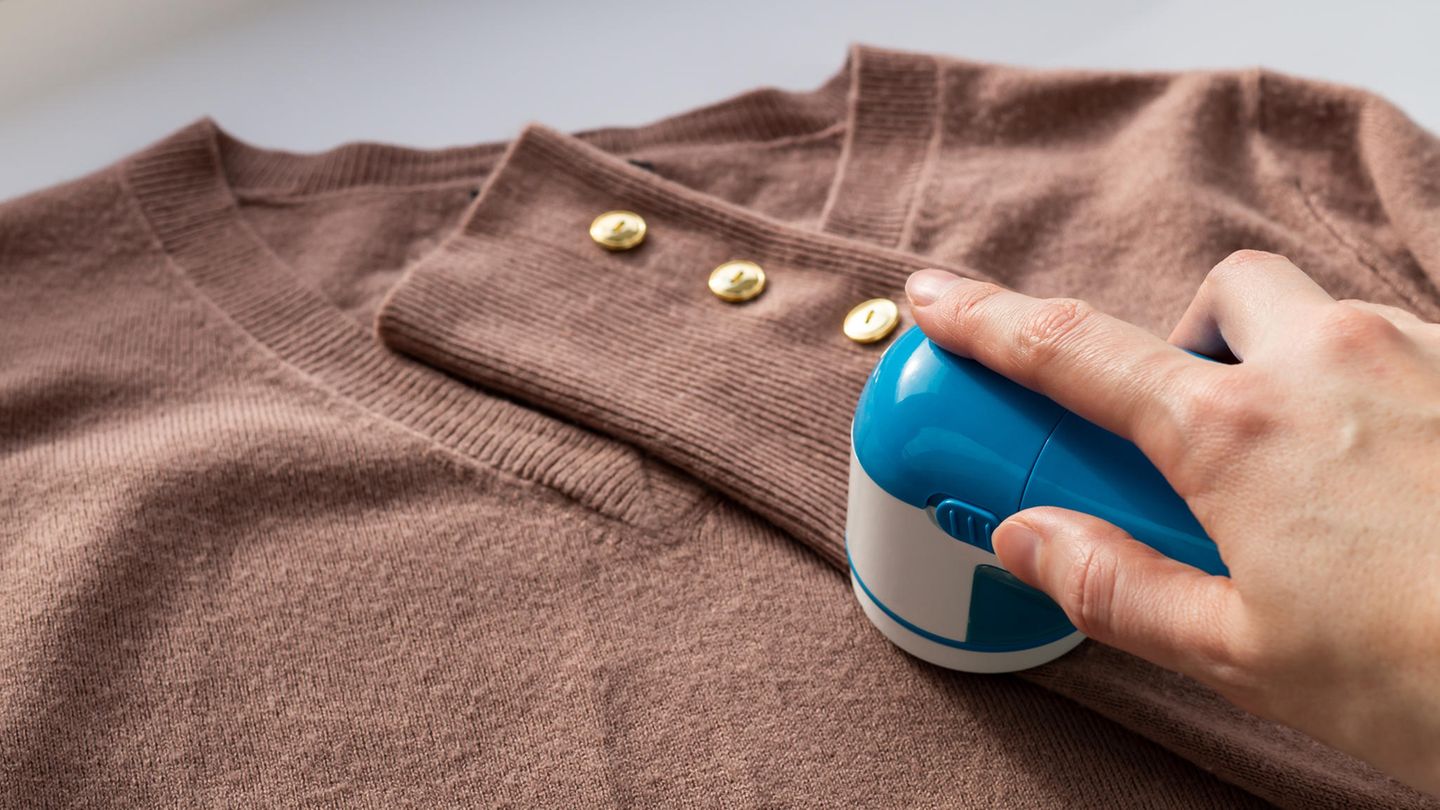The magic of freshly bought clothes often disappears after the first wear, when unsightly lint appears on the fabric. But where does it actually come from – and how do you get rid of it? We’ll tell you.
When lint forms small balls, this is called pilling. This process is triggered by friction and movement – or cleaning in the washing machine. This often affects items of clothing made of natural materials such as wool or cotton. But textiles made of synthetic fibers can also have these unsightly balls. They say nothing about the quality or origin of the material, but are to be understood as a kind of annoying side effect. The question arises: How can lint be removed? And can it perhaps even be prevented?
It’s so easy to remove lint
Depending on whether you want to remove stubborn pilling or loose lint, there are different options and live hacks:
- A is suitable for removing stubborn knots: it cuts them off very carefully without damaging the fabric.
- With ordinary adhesive tape (a wide strip is enough), simple lint and hair can be easily removed from clothing as they stick to it.
- With a are particularly good at removing animal hair from clothing. There are even that are washable.
- A classic On the other hand, it picks up loose fibres and hair by brushing them against the grain of textiles.
- If the lint sticks out from the edge of the clothing in thin streaks, you can cut it off with regular scissors.
- Another household trick is to use a kitchen sponge: the yellow, soft side is supposed to remove lint.
- This technique works just as well or even better with a which can be used to wipe lint and hair from textiles (through electrostatic charging).
- Alternatively, you can use an old pair of nylon tights: slip them over your hand and rub them over the lint on the clothing (in one direction).
How to counteract the formation of lint
To reduce the amount of lint on your clothes (unfortunately, it cannot be completely avoided), you can take preventive measures: A general recommendation is to always turn the laundry inside out before washing it in the machine – this should reduce friction. It can also be helpful to put the textiles in a delicate And empty the pockets beforehand. Another recommendation is to wash delicate clothing by hand rather than putting it in the dryer. However, you should avoid adding vinegar before each wash cycle, as although it is supposed to reduce static electricity (and thus pilling), it also damages the rubber seals of the machine.
More information can be found here.
Source: Stern
I am an author and journalist who has worked in the entertainment industry for over a decade. I currently work as a news editor at a major news website, and my focus is on covering the latest trends in entertainment. I also write occasional pieces for other outlets, and have authored two books about the entertainment industry.




